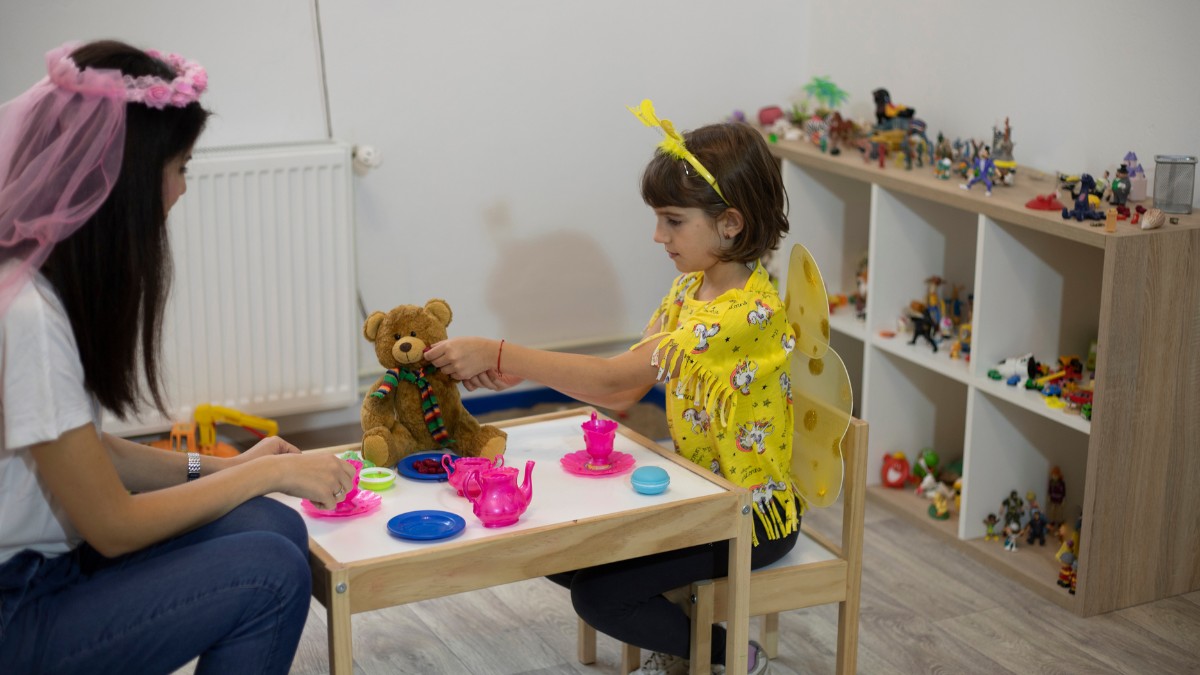Key Points:
- New hope for autism is emerging with groundbreaking treatments, therapies, and research.
- Innovative therapies, including ABA therapy, are showing promising results in enhancing communication and social skills.
- Researchers are exploring new genetic, neurological, and environmental factors that contribute to autism.
Autism Spectrum Disorder (ASD) has long been viewed as a lifelong condition with limited options for improving quality of life. However, in recent years, there has been new hope for autism.
Cutting-edge research and innovative therapies are offering fresh possibilities for individuals with autism and their families. Advances in understanding the genetic, neurological, and environmental factors that contribute to autism are making it possible to develop new treatments and strategies for supporting individuals on the spectrum.
In this article, we will dive deep into the latest breakthroughs in autism treatments, highlighting both scientific advancements and therapeutic interventions that bring new hope to families affected by autism. From new research into the causes of autism to innovative therapies that improve communication and social skills, there’s much to explore.
What are the Latest Breakthroughs in Autism Research?
In recent years, research in the field of autism has been making significant strides. Researchers are exploring various avenues, from genetics to brain function, in hopes of identifying better ways to support those with autism. Here are some examples of these breakthroughs:
Genetic Discoveries and Personalized Medicine
A major breakthrough in autism research has been the discovery of specific genetic mutations linked to autism. These findings are helping researchers better understand how genes affect brain development and behavior. For example:
- Gene Editing: Gene editing technologies, like CRISPR, are being explored for their potential to correct genetic mutations that may contribute to autism.
- Advanced medicine: Personalized medicine is becoming more of a reality, allowing doctors to tailor treatments based on an individual’s genetic makeup.
- Genetics: Research into the autism genome is ongoing, with thousands of autism-related genes being studied to understand their role in the condition.
These advancements are creating opportunities for more effective treatments that target the underlying biological causes of autism.

Neurological Insights and Brain Connectivity
Recent studies of brain connectivity in individuals with autism are also shedding new light on how the condition affects cognitive functioning. Researchers have found differences in how certain areas of the brain communicate with one another in people with autism. Some key findings include:
- Altered brain network activity: Certain brain regions may not connect as efficiently in individuals with autism, leading to challenges with sensory processing and social interactions.
- Improved brain imaging technologies: Functional magnetic resonance imaging (fMRI) and other advanced techniques are enabling researchers to better understand brain activity in real time.
- Targeted brain therapies: Researchers are looking into therapies that might improve brain network functioning, including non-invasive techniques like transcranial magnetic stimulation (TMS).
These neurological insights are leading to more targeted therapies that focus on improving brain connectivity, which could, in turn, help alleviate some of the core symptoms of autism.
How are New Autism Therapies Offering Hope?
In addition to breakthroughs in research, new and refined therapies are helping individuals with autism gain better control over their lives. While traditional therapies like Applied Behavior Analysis (ABA) have long been effective, other newer approaches are emerging and gaining traction.
1. ABA Therapy
ABA therapy remains a great and effective option for treating autism. It focuses on encouraging positive behaviors while reducing unwanted behaviors, using reinforcement strategies. Key benefits include:
- Improved social skills: ABA therapy helps individuals develop appropriate social interactions, which is often one of the biggest challenges for people with autism.
- Skill acquisition: ABA therapy can teach various essential life skills, including communication, self-care, and academic abilities.
- Behavior modification: By using a reward-based system, ABA helps individuals learn how to control their behavior and respond appropriately in different situations.
2. Early Intensive Behavioral Intervention (EIBI)
A subset of ABA therapy, Early Intensive Behavioral Intervention (EIBI) focuses on providing therapy to young children with autism, often under the age of five. Research shows that when provided early in life, EIBI can lead to significant improvements in various skills, including:
- Communication skills
- Early intervention improves language development, which is crucial for social interactions. This enhances the child’s ability to express needs, build relationships, and participate in conversations.
- Cognitive functioning: EIBI helps children improve problem-solving and memory skills. Strengthening these cognitive abilities supports their academic success and daily decision-making.
- Adaptive skills: Children and adults learn daily living skills, which increases their independence. These skills are vital for tasks like dressing, eating, and personal hygiene, promoting self-sufficiency in their routine.
EIBI is one of the most effective ways to intervene in the early stages of autism and has shown positive outcomes in many children.
3. Sensory Integration Therapy
Sensory processing issues are common among individuals with autism. Sensory Integration Therapy aims to address these challenges by helping individuals process and respond to sensory stimuli in a more balanced way. For example:
- Fine motor skills: This therapy often involves exercises that help children improve their ability to use their hands and fingers for tasks such as writing or eating. These skills are essential for daily activities and can greatly increase independence and confidence.
- Sensory regulation: Through specific activities, children can learn how to tolerate sensory stimuli like noise or touch, which can sometimes be overwhelming. Developing these skills helps children navigate various environments more comfortably and reduces anxiety.
- Self-regulation techniques: Children may learn calming strategies, such as deep breathing or using fidget tools, to handle sensory overload. These techniques empower children to manage stress and emotions in a healthy, controlled way.
As sensory issues can significantly impact a child’s day-to-day life, this therapy offers a great way to help children better navigate their environment.
4. Parent-Mediated Interventions
Recent research highlights the importance of involving parents and caregivers in the therapeutic process. Parent-mediated interventions involve training parents to implement therapy strategies at home, which has proven to be highly effective in improving outcomes for children with autism. By including parents in the therapeutic process, families can:
- Consistency: Therapies can be reinforced in everyday life, improving long-term success. This ongoing reinforcement helps children retain skills and behaviors learned during therapy sessions, making them more adaptable in real-world situations.
- Stronger bond: Parents can bond with their children while helping them develop essential skills. By working together during therapy, parents gain a deeper understanding of their child’s needs and create a positive, supportive environment.
- Individualized strategies: The therapy can be tailored to fit each family’s unique circumstances and the child’s needs. This personalized approach ensures that both the child and family receive the most effective strategies to support growth and development.
Parents play a critical role in helping their children make progress, and these interventions empower them to make a difference in their child’s development. To explore additional options that can further support your child’s growth, check out our article on Discovering 6 Various Treatments for Autism Spectrum Disorder.
How Do Advances in Autism Research Impact Therapies?
The relationship between autism research and therapy is mutually beneficial. Breakthroughs in understanding autism’s genetic and neurological underpinnings are informing how therapies are developed and refined.
Likewise, the success of certain therapies is leading to further research into which techniques are most effective for different subtypes of autism. This cyclical relationship between research and therapy ensures that progress is continually made in improving the lives of those with autism.
Incorporating Technology into Autism Therapies
Technology has become an integral part of autism therapies. From virtual reality programs designed to teach social skills to apps that assist with language development, technology is helping make therapy more engaging and effective. Key developments include:

These innovations are making therapy more accessible, engaging, and adaptable to the individual needs of children with autism.
Take the First Step Toward Positive Change with ABA Therapy
New hope for autism is emerging as research continues to uncover groundbreaking treatments and interventions. From genetic discoveries to advancements in therapy techniques, individuals with autism now have more opportunities than ever to succeed. If you’re in Maryland and looking for expert support, Steady Steps ABA offers comprehensive ABA therapy designed to meet the unique needs of your child.
Our team of experienced professionals specializes in individualized therapy for children with autism, offering personalized treatment plans that cater to each child’s specific needs. Whether you’re looking for early intervention or ongoing support, we provide services designed to improve communication skills, social behavior, and more.
Contact us today to find out how we can help your child thrive through proven ABA therapy strategies.






